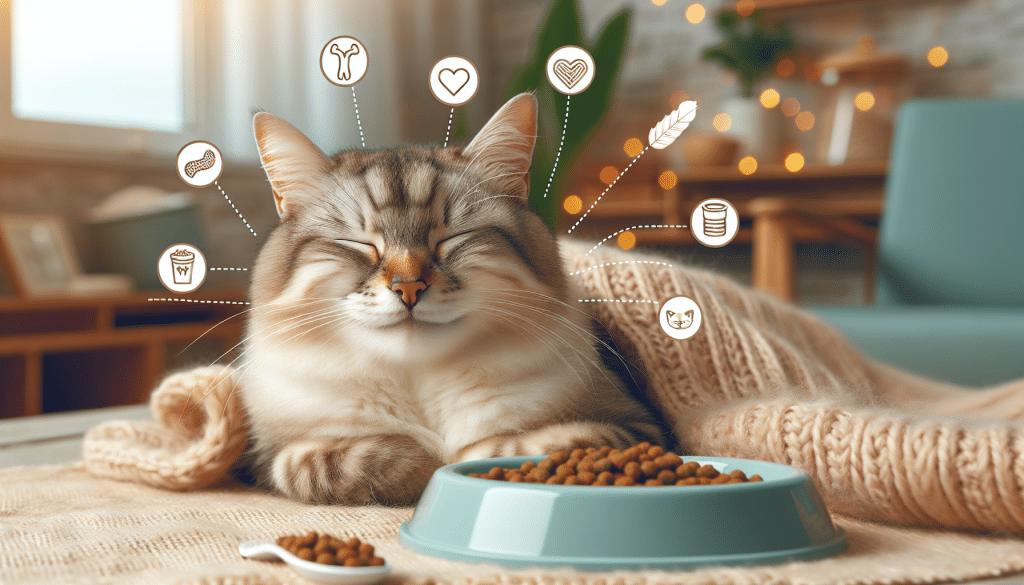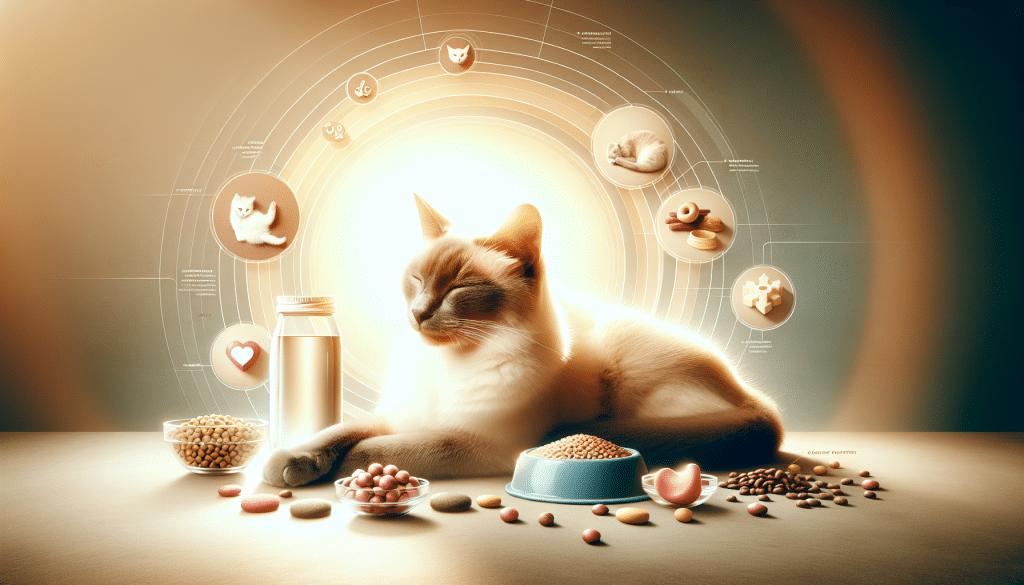So, you love your furry feline friend, but there comes a time when even the most lovable four-legged companions need a little assistance in the bathroom department. Yes, we’re talking about helping your cat poop. It may sound a bit strange, but ensuring that your cat’s digestive system functions smoothly is essential for their overall health and well-being. Luckily, there are a few simple steps you can take to assist your cat in the poop department, from adjusting their diet to providing a comfortable litter box setup. Let’s dive into this peculiar yet necessary topic to help you become a pro at properly aiding your cat when nature calls.

Understanding Cat Digestion
Cats have a unique digestive system that allows them to efficiently process their food. Understanding how they digest their food is essential to recognizing and addressing any issues with their bowel movements. The digestive process of cats begins in the mouth, where they use their sharp teeth to tear and chew their food. From there, the food travels down the esophagus and enters the stomach.
Once in the stomach, the food is broken down further through the action of stomach acids. It then moves into the small intestine where nutrients are extracted and absorbed into the bloodstream. Any remaining waste then passes into the large intestine, where water is reabsorbed, and the formation of feces begins. The feces eventually make their way to the rectum and are expelled from the body through the anus.
Significance of Regular Bowel Movements
Regular bowel movements in cats are a crucial indicator of their overall digestive health. When a cat has regular bowel movements, it means that their digestive system is functioning properly, and waste is being efficiently eliminated from their body. Conversely, irregular bowel movements or constipation can be a sign of an underlying issue that needs to be addressed.

Recognizing Normal Cat Poop
As a cat owner, it is essential to be able to recognize the characteristics of healthy cat poop. Normal cat poop should be well-formed, moist, and easy to pass. It should have a brown color and a mild odor. The size of the poop can vary depending on your cat’s diet and individual factors, but it should generally be consistent in size from day to day.
Characteristics of Healthy Cat Poop
Healthy cat poop should have a firm texture, similar to that of Play-Doh. It should not be too hard or too soft. If the poop is too hard, it may be an indication of constipation. If it is too soft or watery, it could be a sign of diarrhea. In both cases, it is essential to monitor your cat’s bowel movements and consult with a veterinarian if you notice any abnormalities.
Frequency of Normal Cat Bowel Movements
The frequency of your cat’s bowel movements can vary depending on various factors, including their age, diet, and activity level. As a general guideline, most cats should have at least one bowel movement per day. However, some cats may have bowel movements more frequently, while others may go every other day.
It is crucial to establish what is normal for your cat and monitor any changes in their bowel movement frequency. If your cat’s bowel movements become less frequent or stop altogether, it could indicate constipation and should be addressed promptly.
Indications of Constipation in Cats
Constipation is a common issue that can affect cats of all ages. It occurs when the feces become dry and hard, making them difficult for the cat to pass. Being able to recognize the signs of constipation is essential in order to provide timely intervention and relief for your furry friend.
Physical Signs of Constipation
One of the primary physical signs of constipation in cats is straining in the litter box. If you notice your cat spending an extended amount of time in the litter box without producing any poop or appearing to be in discomfort, it could be an indication of constipation.
Another physical sign is the presence of small, dry, or hard feces in the litter box. If you notice that your cat’s poop is not well-formed, and it appears to be difficult for them to pass, it is worth investigating further.
Behavioural Changes Signalling Constipation
In addition to physical signs, cats may also exhibit behavioral changes when they are constipated. They may appear agitated, restless, or uncomfortable. Some cats may even vocalize their discomfort or exhibit signs of distress.
It is important to pay attention to any changes in your cat’s behavior, as they can provide valuable clues about their overall well-being and help identify any potential constipation issues.

Factors Contributing to Cat Constipation
There are several factors that can contribute to constipation in cats. Understanding these factors can help you take the necessary steps to prevent or address constipation in your furry friend.
Diet and Hydration
A cat’s diet plays a significant role in their digestive health and can affect the frequency and consistency of their bowel movements. A diet that lacks sufficient fiber or is too high in processed foods can contribute to constipation. It is essential to provide a well-balanced diet that includes adequate sources of fiber to promote healthy digestion.
Additionally, dehydration can lead to constipation in cats. Ensuring that your cat has access to fresh, clean water at all times is crucial in maintaining proper hydration and preventing constipation.
Lack of Exercise
Just like humans, cats need regular exercise to keep their bodies and digestive system functioning optimally. Lack of physical activity can contribute to constipation by slowing down the movement of stool through the intestines. Regular playtime and exercise can help promote healthy bowel movements and prevent constipation in cats.
Underlying Medical Conditions
Sometimes constipation can be a symptom of an underlying medical condition in cats. Conditions such as intestinal blockages, kidney disease, or pelvic injuries can cause constipation. If you suspect that there may be an underlying medical issue contributing to your cat’s constipation, it is important to consult with a veterinarian for proper diagnosis and treatment.
Importance of Veterinary Consultation
When it comes to constipation in cats, it is crucial to know when to seek veterinary consultation. While occasional episodes of constipation may not be a cause for concern, persistent or severe constipation can lead to serious health issues if left untreated.
When to Consult a Veterinarian
If your cat’s constipation persists for more than 48 hours, or if they are exhibiting signs of distress, it is recommended to consult with a veterinarian. Other red flags that warrant veterinary attention include lack of appetite, vomiting, lethargy, or noticeable discomfort.
How a Veterinarian Diagnoses Constipation in Cats
When you consult with a veterinarian for constipation issues, they will perform a thorough physical examination of your cat. This may include feeling the abdomen for any abnormalities or blockages. They may also request additional tests such as blood work, X-rays, or ultrasounds to rule out any underlying medical conditions.
The veterinarian will use their expertise to diagnose the cause of the constipation and recommend appropriate treatment options based on the specific needs of your cat.
Treatment Options for Cat Constipation
Treating cat constipation may involve a combination of lifestyle changes, medications, and in some cases, surgical interventions. The treatment approach will depend on the severity of the constipation and the underlying cause.
Medications to Help Cat Poop
In some cases, your veterinarian may prescribe medications to help your cat pass stool more easily. These medications may include stool softeners, laxatives, or enemas. It is essential to follow your veterinarian’s instructions carefully when administering medication to your cat and to monitor their response.
Surgical Interventions
In severe cases of constipation or when an underlying blockage is present, surgical intervention may be necessary. Your veterinarian will discuss the options and recommend the most appropriate course of action based on your cat’s individual situation.
Nutrition for Healthy Cat Bowel Movements
Proper nutrition plays a vital role in maintaining healthy bowel movements in cats. Certain dietary factors can help prevent constipation and promote regularity.
The Role of Fiber in Cat Diet
Fiber is an important component of a cat’s diet and can help promote healthy bowel movements. It adds bulk to the stool, making it easier to pass. There are several sources of fiber that can be included in your cat’s diet, such as pumpkin, psyllium husk, or specialized high-fiber cat foods. It is important to introduce any dietary changes gradually and consult with your veterinarian for specific recommendations.
Hydration and Its Effect on Digestion
As mentioned earlier, dehydration can contribute to constipation in cats. Ensuring that your cat is adequately hydrated is essential for maintaining healthy digestion and regular bowel movements. Along with providing fresh water, you can also incorporate wet cat food into their diet, as it contains higher moisture content compared to dry kibble.
Exercise for Healthy Cat Bowel Movements
Regular exercise and physical activity are key to promoting healthy bowel movements in cats. By engaging your cat in playtime and providing opportunities for exercise, you can stimulate their digestive system and help prevent constipation.
Exercise and Digestion in Cats
Exercise helps stimulate the muscles in the intestines and promotes the movement of stool through the digestive system. Simple activities such as interactive play sessions, chasing toys, or using puzzle feeders can provide mental and physical stimulation while keeping your cat active.
Fun exercises to help your cat poop
Creating a stimulating environment for your cat can encourage exercise and promote healthy bowel movements. Consider providing climbing trees, scratching posts, or interactive toys that require physical engagement. Additionally, incorporating regular playtime into your cat’s daily routine can help keep them active and maintain healthy digestion.
Administering Laxatives and Stool Softeners
In some cases, your veterinarian may recommend the use of laxatives or stool softeners to help relieve constipation in your cat. It is important to be cautious when administering these medications and to follow your veterinarian’s instructions closely.
Types of Cat Laxatives and Stool Softeners
There are different types of laxatives and stool softeners available for cats. Your veterinarian will determine which option is most suitable for your cat based on their specific needs. Common options include oral medications, rectal suppositories, or lubricants.
Safe Administration of Laxatives and Stool Softeners
Administering laxatives or stool softeners to cats requires gentle handling and patience. It is important to follow the instructions provided by your veterinarian and to ensure that the medication is given in the correct dosage. If you have any concerns or difficulties, it is always best to consult with your veterinarian for guidance.
Long-Term Strategies for Preventing Constipation in Cats
Taking proactive measures to prevent constipation in cats can help ensure their long-term digestive health and overall well-being. Several long-term strategies can be implemented to support healthy bowel movements.
Maintaining a Balanced Diet
Providing a well-balanced diet that includes adequate sources of fiber is essential for preventing constipation in cats. Consult with your veterinarian to determine the appropriate type and amount of fiber for your cat’s diet. Additionally, avoiding excessive consumption of processed foods and incorporating natural, whole foods can help promote healthy digestion.
Regular Exercise and Environmental Enrichment
Regular exercise and environmental enrichment are crucial for maintaining healthy bowel movements in cats. Engage your cat in interactive play sessions, provide opportunities for climbing, and ensure they have access to stimulating toys and scratching posts. Creating an enriching environment can help keep your cat physically active and mentally stimulated, promoting regular bowel movements.
Regular Veterinary Check-ups
Regular veterinary check-ups are important for preventing and addressing constipation in cats. Your veterinarian can monitor your cat’s overall health, provide guidance on diet and exercise, and detect any potential health issues early on. By staying proactive and maintaining open communication with your veterinarian, you can ensure that your cat receives the best possible care and support for their digestive health.
In conclusion, understanding cat digestion and recognizing the signs of constipation is essential for maintaining the overall health and well-being of your feline friend. By implementing appropriate preventive measures and seeking veterinary care when needed, you can help ensure that your cat’s bowel movements are regular and comfortable. Remember to consult with your veterinarian for any concerns or questions regarding your cat’s digestive health, as they are the best resource for personalized advice and guidance.



